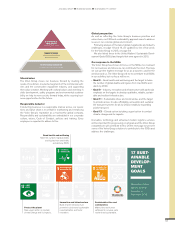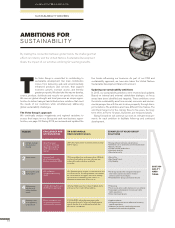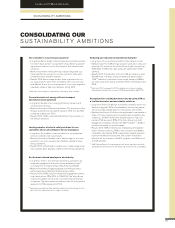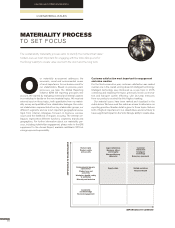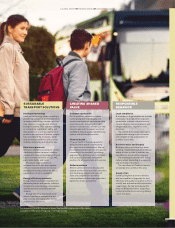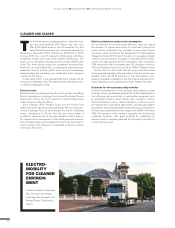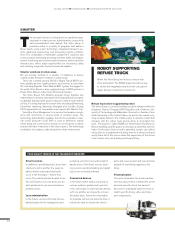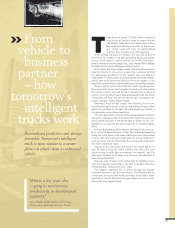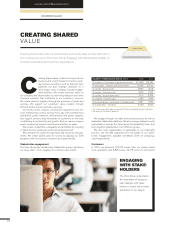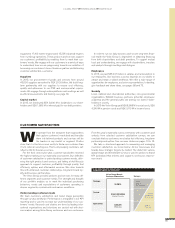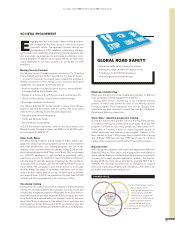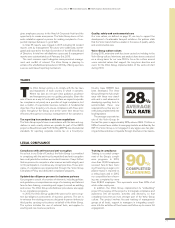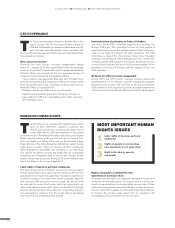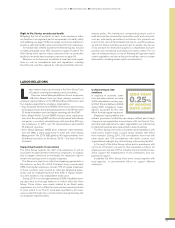Volvo 2015 Annual Report Download - page 65
Download and view the complete annual report
Please find page 65 of the 2015 Volvo annual report below. You can navigate through the pages in the report by either clicking on the pages listed below, or by using the keyword search tool below to find specific information within the annual report.
Today there are about 175,000 online-connected
Volvo trucks on Europe’s roads. A number of them
can already today send information about when
they need maintenance and some of the neces-
sary service work can even be administrated
remotely. This, however, is just the beginning.
“In the coming few years, for instance, the truck will be able to
monitor its own health in real time, promoting easier and quicker
service which leads to higher productivity for all concerned –
drivers, workshops and haulage firms,” says Hayder Wokil, Market
& Product Performance Manager at Volvo Trucks.
In the future the truck will also make workshop administration
easier by booking its own service as and when necessary, booking
the appropriate mechanics for the relevant jobs and advance-
ordering the necessary parts for delivery to the workshop. Repairs
will be able to be performed wherever the truck happens to be
and will be carried out at an appropriate time in its working schedule.
“Service will be synchronized with the truck’s operating time-
table and will be booked at the nearest workshop at a time when
the vehicle would in any case not be in operation, for instance at
night or when the driver has to take a legislated break. Via online
connectivity the truck will also be able to carry out simple self-
repairs remotely,” relates Hayder Wokil.
Tomorrow’s truck will also enable more flexibility. As the con-
nectivity potential for trucks continues developing, vehicles will be
able to be specified to suit each individual assignment, which in
turn promotes more efficient operation.
“The next generation of trucks will be increasingly personalised
and will for example be able to be tailored to match the operator’s
needs and driving style. It will also be able to update its own con-
figuration to suit specific transport assignments,” explains Hayder
Wokil.
An important prerequisite to harness the benefits of connectiv-
ity is collecting large amounts of data. This is already happening
today, but in the future it will mean that trucks can communicate
not only with other road users and trucks but also portable items
such as bicycle helmets. This means the reduced risk of accidents
and fewer unplanned stops.
“Thanks to this connection, the truck in the future will, on its
own, be able to read the traffic situation and select the most
efficient route, in traffic jams or roadworks for example,” says Per
Adamsson, Director of Strategy and Business Development at
Volvo Group Telematics.
However, even if much of the technology for realizing tomor-
row’s truck already exists today, it may take some time before the
next-generation scenario becomes reality.
“The biggest challenge lies in sifting through the massive
amount of data we collect from our vehicles. The infrastructure for
connectivity throughout the world also needs to be further devel-
oped before we can transform next-generation vision into every-
day reality,” says Hayder Wokil.
Personalized, predictive and always
driveable. Tomorrow’s intelligent
truck is more similar to a smart-
phone on wheels than a traditional
vehicle.
From
vehicle to
business
partner
–how
tomorrow’s
intelligent
trucks work
“ Within a few years this
is going to revolutionize
productivity in the transport
industry,”
says Hayder Wokil, Market & Product
Performance Manager at Volvo Trucks.
63


